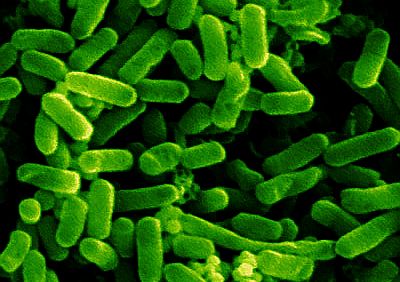Bacterial Growth Physiology
 An
important goal of modern biology is to connect molecular control
strategies with the physiology of the organism. Recently, the strong
indirect control bacterial growth itself imposes on the level of gene
expression has become more widely appreciated. This interdependence
between cell growth and gene expression has been observed for a long
time, but it is only in the last few years that the origins and
consequences of these so-called growth laws have been explored in
detail.
An
important goal of modern biology is to connect molecular control
strategies with the physiology of the organism. Recently, the strong
indirect control bacterial growth itself imposes on the level of gene
expression has become more widely appreciated. This interdependence
between cell growth and gene expression has been observed for a long
time, but it is only in the last few years that the origins and
consequences of these so-called growth laws have been explored in
detail.
In 1958, Schaechter, Maaloe and Kjeldgaard observed that certain macroscopic features of bacterial composition, for example the RNA/Protein ratio, are functions of growth rate alone. That is, irrespective of whatever microscopic adaptation and regulation is going on, some global strategy synchronizes the parts to control cell growth and composition. Using experimental and theoretical methods, we are uncovering what underlies this global control, and gives rise to the robust e,mpirical relationships we call the growth laws. Furthermore, by perturbing the growth program through various means, new growth laws emerge that point to a deep coupling between core catabolism and growth rate control.
My present research focus is to examine the consequences of these growth laws, specifically as a mechanism for generating distinct sub-populations in a culture that shares identical DNA (phenotypic bistability). This multidisciplinary research program brings together modern methods in proteomics, single-molecule microscopy, microbiology and biochemistry, integrated together using the tools and techniques of mathematical physics.
This work is being done in collaboration with Terry Hwa at the University of California, San Diego, and was recently published in Science.
